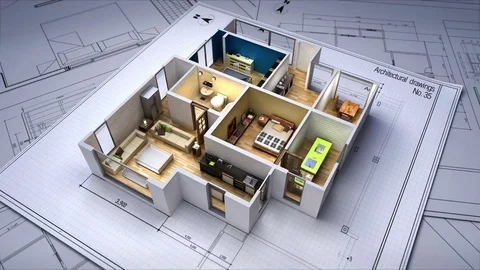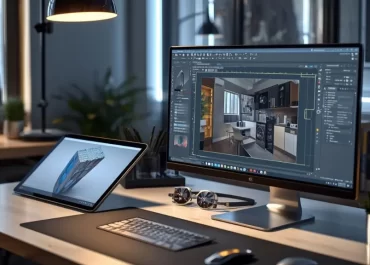Spatial planning is one of the most essential building blocks in the design of a space, an interior, etc. Leading a first-time customer to a successful project outcome helps any business grow. The space plan describes the process for determining the rationale, functional requirements, and basic fit-up for any particular building area. This is a key element in interior drafting.
When space is limited, it poses the challenge of adapting whatever you need in the area while making it aesthetically pleasing. There are a few interior drafting techniques that help to maximize space use.
The first step is to use a rough soil map to identify areas whose design uses are based on the client’s needs, preferences, and principles of efficient and sustainable interior drafting. Then move from conceptual to reality by making decisions about development, acreage, design, etc.
Once the requirements (consciously and subconsciously) have been refined, then you can start making precise decisions on how to meet the requirements.
This three-step process, from concept to the individual, will help you figure out exactly what customers are looking for without asking. This helps them engage in a specific design right from the beginning.
Key Things to Maximize the Usage of Space

Spatial planning is essential in every interior drafting process because it is the key to creating an optimum design. Because interior drafting is a specialist branch of architecture, we offer the best interior drafting services.
The determination of the purpose of space utilization is the first step in interior drafting. Our designers gather all the information from the client to understand how to use the space. It helps to create a functional design that balances well with the aesthetic and satisfies the customer’s needs.
Focus on Easy Movements
When we plan the space, we focus on the simple moves that support the functionality of the space. We keep a record of the navigation through the parts has to be easy and smooth to reach its desired functionality.
Passageways should be clear and free from obstacles, and the space between structures should be sufficient to allow unhindered movement. It should be comfortable to walk through space and not hit anything. A fluid movement in the space facilitates workflow and increases efficiency.
Maximum Lights
Our studio believes that a functional living space should be airy and well-lit which brings cheers. Rooms must have maximum light entry or adequate lighting arrangements, which we achieve through proper window placement or planning for suitable artificial lighting.
When considering window placement for maximum entry of light, we make sure that it faces the right direction to allow maximum entry of sunlight or natural light as you want it to be.
Placing Switches and Outlets

Most customers talk about lights, devices, and other devices, and we always look at the figures that would require a plugin. The number of outlets and switches depends on your space utilization.
Keep Furnishings Simple, Not Small
If you use simple and elegant furnishings, the size of the furnishings will not be an issue. A common mistake that people make when decorating a small space is to use too much small furniture rather than a few larger pieces.
Create Focal Points
Choose one or two focal points as coordinators. A focal point can be something big such as a dramatic painting or lighting device or something small such as a decorative bowl or a small sculpture.
The design must be humane, meaning that it must include more than interesting decorations or architectural decisions. Rather, it must respond to psychological needs and contribute to the promotion of good mental, physical, and other health. Offer a clear view of other rooms or, ideally, the exterior, if possible.
Conclusion
Keep in mind the theory of perspective and shelter. In simple terms, we believe that spaces have two distinct functions that can be increased or limited according to what the customer wants. The forward-looking spaces look out into other areas or out and the refuge areas are designed for rest and retirement. In some cases, space may include both functions.




